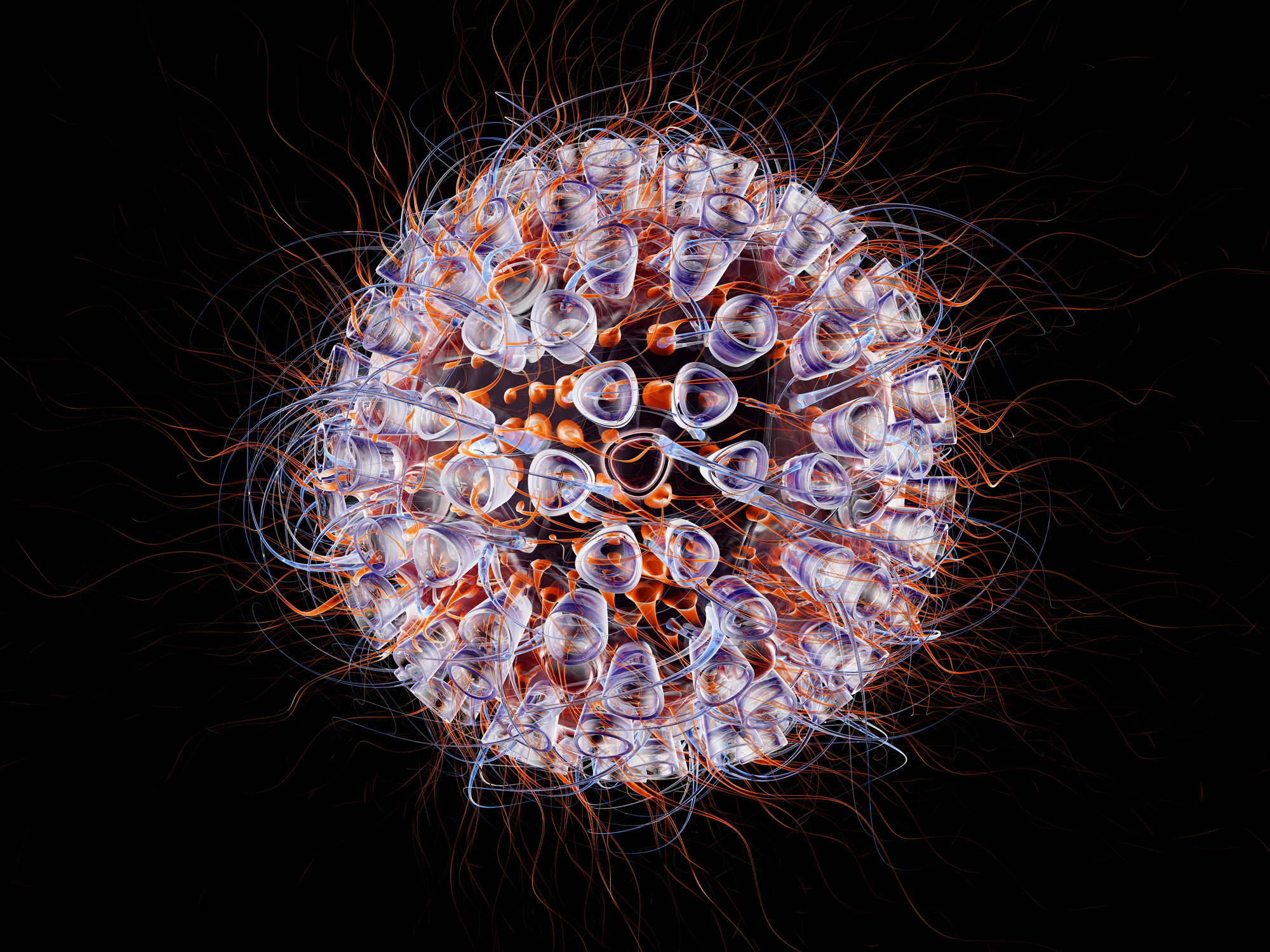
Researchers have identified the second HIV patient to apparently clear the virus from her body—without the use of antiviral drugs.
According to a report published Monday in the Annals of Internal Medicine, a now 31-year-old woman who was diagnosed with HIV in 2013 only took antiretroviral therapy for six months during pregnancy to prevent transmitting the infection to her baby. Yet multiple sophisticated tests looking for genetic evidence of HIV in the patient’s blood showed no intact virus in her cells, says Dr. Xu Yu, who led the research team reporting on the case. She’s a principal investigator at the Ragon Institute of Massachusetts General Hospital, MIT and Harvard, as well as an associate professor of medicine at Harvard Medical School. The findings suggest that the patient’s immune system was even able to clear the reservoirs of HIV that allow the virus to continue replicating for decades. Current anti-HIV drugs can lower virus levels to undetectable levels but can’t completely rid the body of these lingering reservoirs of the virus.
“There is no way to ever say we have proof that there is not a single virus in this patient,” says Yu. “The only thing we can say is that after analyzing a large number of cells from the patient, with the technology in our lab we cannot reject the hypothesis that the patient probably reached a sterilizing cure by natural immunity.”
There have been previous reports of patients who stopped taking anti-HIV medications and achieved undetectable virus levels for years, including Timothy Ray Brown, who’s also known as “the Berlin patient,” and Adam Castillejo, “the London patient.” Both, however, had been diagnosed with cancer and benefited from having a stem cell transplant to treat it, which replaced their immune cells with ones from donors that included cells that could block HIV infection. They also likely continued to harbor latent reservoirs of HIV, which have been eliminated in the patient Yu is describing.
The woman is the second patient to apparently clear the virus in this way. Yu’s team described the first person, known as “the San Francisco patient,” in 2020. This second patient, who’s from Esperanza, Argentina, is working with Yu’s team and continues to provide blood samples for ongoing research studies. She is currently pregnant with her second child, and Yu and the patient’s doctors are discussing whether her remarkable, apparently virus-free condition means she won’t need to take anti-HIV drugs before and during delivery (which guidelines currently recommend for pregnant women who are HIV positive). The Esperanza patient will also provide the team with samples of her breast milk so the scientists can determine if it contains any virus.
Yu’s team has analyzed 1.5 billion blood and tissue cells from the Esperanza patient since 2017, searching for any hints of whole genetic virus material that would indicate a virus that could potentially still be active and replicate again. But they failed to find such evidence. They did, however, find fragments of viral genes that indicated this patient was infected with HIV at one point. They found similar clues in the San Francisco patient.
Most Popular from TIME
Yu cautions that the findings may not be generalizable to most HIV patients. Both of her patients belong to a group known as elite controllers, or people who are able to suppress HIV at very low, often undetectable levels with their immune systems, without the help of anti-HIV drugs. Researchers around the world are studying these people intensively; it’s not clear what percentage of those infected with the virus are able to naturally contain it with their immune systems, but Yu believes that the two patients she described suggest that there may be more. She’s hoping that hearing about the first two will encourage others to get tested and studied, so scientists can better understand what aspect of their immune systems are providing such an effective way to block HIV.
“Many immune factors could be playing a role,” she says. “Now that we have a second case, there are probably many cases out there that may not know they have a sterilizing cure. Some may not even be aware they are infected. We are hoping to attract more patients; if we have a cohort of these extremely rare cases, then that will allow us to really analyze their immune responses in more depth and breadth and hopefully give us a hint about what immune factors contribute most to this status. Then we can apply what we learn to the general population.”
Since the first elite controllers were identified among sex workers in Africa in the 1990s, scientists have been studying their immune systems, looking at everything from the antibodies they make to the immune system’s highway made up of lymphocytes. So far, they haven’t identified what is keeping these people protected from severe disease, but Yu says more sophisticated ways of searching for even the slightest hint of HIV’s genes are making it possible to find people like the San Francisco and Esperanza patients. That in turn could spin the work on elite controllers forward. One thing Yu is hoping to do, for example, is compare the immune response among these two patients to that produced by people who are taking anti-HIV drugs. It’s possible that the drug cocktails produce an immune response weaker than what’s generated by these two patients, and scientists could find ways to bolster that response.
More Must-Reads from TIME
- Why Biden Dropped Out
- Ukraine’s Plan to Survive Trump
- The Rise of a New Kind of Parenting Guru
- The Chaos and Commotion of the RNC in Photos
- Why We All Have a Stake in Twisters’ Success
- 8 Eating Habits That Actually Improve Your Sleep
- Welcome to the Noah Lyles Olympics
- Get Our Paris Olympics Newsletter in Your Inbox
Contact us at letters@time.com